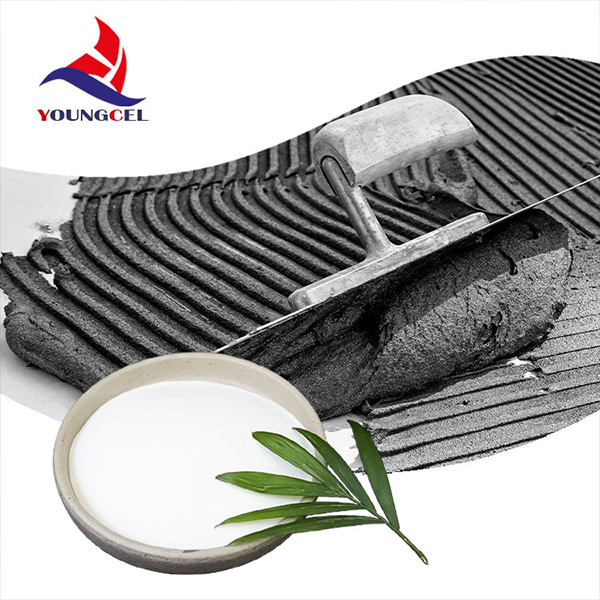Jun . 14, 2024 09:11
Back to list
Hydroxypropyl methylcellulose (HPMC) is a versatile polymer.
Hydroxypropyl methylcellulose (HPMC) is a semi-synthetic, inert polysaccharide derived from natural cellulose. It is widely used in various industries due to its unique properties, including solubility in cold water, excellent film-forming ability, and thermogelation characteristics.
In the pharmaceutical industry, HPMC is extensively employed as a binder, disintegrant, and release-controlling agent in tablets and capsules. Its ability to form a gel layer around the tablet upon contact with water allows for controlled drug release, which is essential for extended-release formulations. Moreover, HPMC is also used as a thickening agent in topical formulations such as creams and ointments, providing stability and improving texture without causing skin irritation.
The food industry also benefits from the use of HPMC. It serves as a stabilizer, emulsifier, and thickener in various food products, including ice cream, sauces, and salad dressings. Its ability to form heat-stable gels contributes to the improvement of the texture and mouthfeel of these products. Additionally, HPMC is used as a barrier in edible films and coatings, extending the shelf life of food products by preventing moisture loss and gas exchange.
In the cosmetics industry, HPMC is utilized as a suspending agent, emulsion stabilizer, and viscosity modifier
In the cosmetics industry, HPMC is utilized as a suspending agent, emulsion stabilizer, and viscosity modifier In the cosmetics industry, HPMC is utilized as a suspending agent, emulsion stabilizer, and viscosity modifier
In the cosmetics industry, HPMC is utilized as a suspending agent, emulsion stabilizer, and viscosity modifier
In the cosmetics industry, HPMC is utilized as a suspending agent, emulsion stabilizer, and viscosity modifier
In the cosmetics industry, HPMC is utilized as a suspending agent, emulsion stabilizer, and viscosity modifier hydroxypropyl methyl cellulos hpmc. Its non-ionic nature makes it compatible with a wide range of ingredients, ensuring the stability of cosmetic formulations. Furthermore, HPMC's film-forming properties make it an ideal ingredient for hair styling products, providing hold without leaving residue or buildup.
The use of HPMC extends beyond these industries, as it is also employed in the textile industry as a sizing agent for yarns and fabrics. Its ability to form a smooth, lubricating layer on fibers reduces friction during weaving or knitting, resulting in fewer breaks and a more even appearance.
In conclusion, hydroxypropyl methylcellulose (HPMC) is a versatile polymer with numerous applications across various industries. Its unique properties, including solubility in cold water, film-forming ability, and thermogelation characteristics, make it an essential ingredient in many products. As research continues, the potential applications of HPMC will likely expand, further demonstrating its significance in modern industry.
hydroxypropyl methyl cellulos hpmc. Its non-ionic nature makes it compatible with a wide range of ingredients, ensuring the stability of cosmetic formulations. Furthermore, HPMC's film-forming properties make it an ideal ingredient for hair styling products, providing hold without leaving residue or buildup.
The use of HPMC extends beyond these industries, as it is also employed in the textile industry as a sizing agent for yarns and fabrics. Its ability to form a smooth, lubricating layer on fibers reduces friction during weaving or knitting, resulting in fewer breaks and a more even appearance.
In conclusion, hydroxypropyl methylcellulose (HPMC) is a versatile polymer with numerous applications across various industries. Its unique properties, including solubility in cold water, film-forming ability, and thermogelation characteristics, make it an essential ingredient in many products. As research continues, the potential applications of HPMC will likely expand, further demonstrating its significance in modern industry.
 In the cosmetics industry, HPMC is utilized as a suspending agent, emulsion stabilizer, and viscosity modifier
In the cosmetics industry, HPMC is utilized as a suspending agent, emulsion stabilizer, and viscosity modifier
In the cosmetics industry, HPMC is utilized as a suspending agent, emulsion stabilizer, and viscosity modifier
In the cosmetics industry, HPMC is utilized as a suspending agent, emulsion stabilizer, and viscosity modifier hydroxypropyl methyl cellulos hpmc. Its non-ionic nature makes it compatible with a wide range of ingredients, ensuring the stability of cosmetic formulations. Furthermore, HPMC's film-forming properties make it an ideal ingredient for hair styling products, providing hold without leaving residue or buildup.
The use of HPMC extends beyond these industries, as it is also employed in the textile industry as a sizing agent for yarns and fabrics. Its ability to form a smooth, lubricating layer on fibers reduces friction during weaving or knitting, resulting in fewer breaks and a more even appearance.
In conclusion, hydroxypropyl methylcellulose (HPMC) is a versatile polymer with numerous applications across various industries. Its unique properties, including solubility in cold water, film-forming ability, and thermogelation characteristics, make it an essential ingredient in many products. As research continues, the potential applications of HPMC will likely expand, further demonstrating its significance in modern industry.
hydroxypropyl methyl cellulos hpmc. Its non-ionic nature makes it compatible with a wide range of ingredients, ensuring the stability of cosmetic formulations. Furthermore, HPMC's film-forming properties make it an ideal ingredient for hair styling products, providing hold without leaving residue or buildup.
The use of HPMC extends beyond these industries, as it is also employed in the textile industry as a sizing agent for yarns and fabrics. Its ability to form a smooth, lubricating layer on fibers reduces friction during weaving or knitting, resulting in fewer breaks and a more even appearance.
In conclusion, hydroxypropyl methylcellulose (HPMC) is a versatile polymer with numerous applications across various industries. Its unique properties, including solubility in cold water, film-forming ability, and thermogelation characteristics, make it an essential ingredient in many products. As research continues, the potential applications of HPMC will likely expand, further demonstrating its significance in modern industry. Next:
Latest news
-
Premium Detergent Grade HPMC Hydroxypropyl Methylcellulose: Superior Thickening & StabilityNewsAug.31,2025
-
HEC 100000 Hydroxyethylcellulose for Paint | Superior ThickeningNewsAug.30,2025
-
Wall Putty Rdp Powder Packaging DesignNewsAug.29,2025
-
Introduction to Hpmc Hydroxypropyl Methyl CellulosNewsAug.29,2025
-
Hpmc Industri Grade IntegrationNewsAug.29,2025
-
How to Choose the Right Construction AdhesiveNewsAug.29,2025




